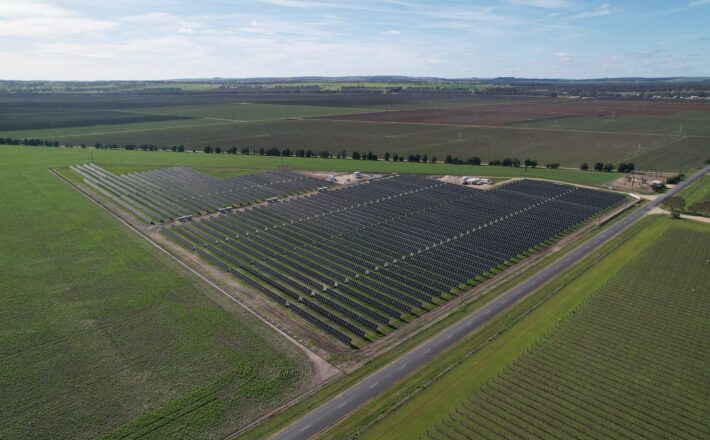By focusing on sustainable vineyard management, nurturing the vineyard and its soil, Penley can ensure vineyard ‘balance’ is maintained no matter what conditions each season delivers.
Penley was first conceived as a hypothetical business name upon the marriage of Reginald Tolley and Judith Penfold in 1947. Their children Kym, Ang and Bec Tolley jointly bought a block of land in Coonawarra in 1988 which marked the beginning of Penley Estate. In 1995 the Penley Estate winery was built and in 2015 Ang and Bec took full ownership of the company. Penley Estate wines are all estate grown on 80 hectares of vines managed by viticulturist, Hans Loder. In November 2022, Penley Estate joined Sustainable Winegrowing Australia and by the end of December 2022 had achieved certification of its vineyard and winery.
This case study explores Penley Estate’s use of technology to monitor soil and vine water status for better informed irrigation decisions and water savings.
The situation
Variable soils

Upon commencing work at Penley Estate, viti Hans Loder recognised significant potential to improve water use efficiency to better target yield and quality objectives. Vine canopies and yield were variable across the vineyard, causing uneven ripening and yield impacts. To better understand the underlying cause of this variability, EM38 mapping using an electromagnetic induction device was undertaken to enable informed irrigation decisions. This was completed in conjunction with aerial drone imagery to map each vine in the vineyard. In doing so, areas of the vineyard with high and low growth potential were identified. The results also showed dense canopy growth in frost-prone areas, indicating that these areas were receiving unnecessary additional irrigation (from frost sprinklers).
‘’We take pride in producing the best possible wines while minimising our impact on the environment, and this certification is a testament to our commitment to sustainability’’
Solutions
Soil and vine water sensing

Once the areas of soil variability had been identified, these were targeted to better understand the water holding capacity. A network of 5 Sentek soil moisture probes were installed across the vineyard and the Athena infrared sensor system was used, which gave insight into vine water potential and vine water status. Following the implementation of the Athena sensors two years ago, irrigation application has become more efficient and the understanding of vine response to targeted irrigation has increased, leading to an overall reduction in water use per hectare. Using technology to monitor vine water status, combined with the EM38 mapping, also revealed a large reservoir of water in the soil. This has meant that irrigation now commences later in the season and further water savings have been made.
Vineyard floor improvements

As a result of the soil and vineyard mapping, the approach to undervine and mid-row management has also changed. Using Platfarm technology, a precision-based farming tool, informed by aerial imagery of the vineyard and soil surveys, compost is variably applied to areas of the vineyard where it is most needed. This has increased soil organic matter and, by encouraging a careful selection of grass species to spread into the undervine area, a biologically rich, multi-species area of living mulch has been created across the vineyard floor.
Soil monitoring has revealed improved soil structure and organic matter, helping soils to retain water naturally. Simultaneously, there has been a shift away from inorganic fertilisers to composts with high organic matter. Paying attention to key aspects of the vineyard’s soil has resulted in more balanced and resilient vines that are more able to withstand water stress and reduced reliance on inorganic inputs.
Paying attention to key aspects of the vineyard’s soil health has resulted in happier vines with a healthy, sustainable trajectory.
The benefits
By implementing these different technologies to monitor soil and vine water status, irrigation is now better informed and has led to water savings. In 2021/22, vineyard water use at Penley Estate was in the lowest 17% of other vineyard members in Coonawarra.

Water use (ML/ha) at Penley Estate vineyards was in the lowest 17% of members in the Coonawarra region in 2021/22.
‘’For land to remain viable and vineyards to display resilience to extremes, we need to work smarter and give something back.’
ACKNOWLEDGEMENT
This case study was developed by the Australian Wine Research Institute with support from Hans Loder, Viticulturist at Penley Estate, the Limestone Coast Grape and Wine Council and the Limestone Coast Landscape Board, through funding from the Government’s National Landcare Program.











